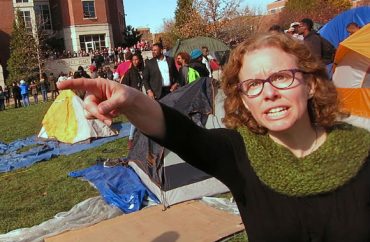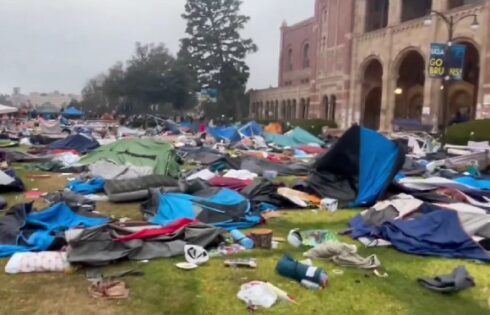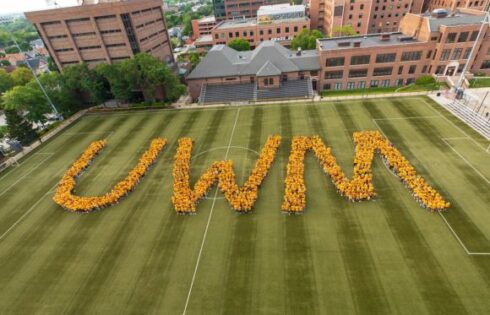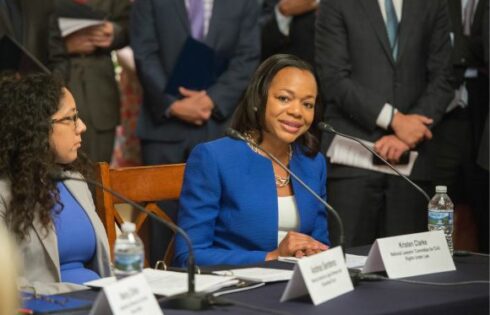
Essay explores ‘Non-Diversity, Non-Freedom, and Non-Academics in Higher Education’
The past few years of academia have seen a large number of universities and colleges lurching from one crisis to the next: unruly and violent student mobs, anti-free-speech demonstrations, a staggering lack of tolerance for dissenting viewpoints, resignations of top-level college officials. Now, one professor is analyzing perhaps the most potent flashpoint of the past two years of academic madness.
At the National Association of Scholars website, University of St. Louis-Missouri professor J. Martin Rochester explains “the 2015 campus crisis,” starting with the racial and political turmoil at the University of Missouri in 2015.
“The 2015 crisis at the University of Missouri-Columbia,” Rochester writes in part one of the five-part essay, “is a window into how ‘institutional liberalism’ has subverted the modern university throughout America.”
That crisis, he claims, began with the protests instituted by the “Concerned Student 1950” protest group at Mizzou. The group, claiming that Mizzou was a hotbed of racist activity, issued demands, performed protests and initiated hunger strikes; Mizzou’s football team, as well, threatened to boycott its matches, a move that would have cost the university millions of dollars.
“Under growing pressure from faculty and state legislators concerned about damage to the school’s reputation,” Rochester notes, “[Mizzou] President [Tim] Wolfe announced his resignation on November 9. He was followed hours later by Chancellor Loftin, who likewise had been accused of insensitivity to racial and social justice issues.”
The turmoil continued, Rochester writes, when Mizzou faculty member Melissa Click verbally threatened (and appeared to assault) two student reporters who were attempting to cover the protests.
In part two of the series, Rochester claims he watched the turmoil with “a mixture of amazement and horror:”
Amazement, because perhaps never before had so few students been able to get so many college administrators to display so much cowardice over so little provocation. A relatively small group of protestors not only succeeded in ousting the two highest officials in the UM system but also emboldened the radical left all across the country to hold campuses hostage to threats of disruption, in a chain reaction that eventually encompassed both elite private universities and large public institutions. Horror, because perhaps never before had we seen quite this combination of jackbooted intolerance and sophomorism at work in higher education…
[I]t is hard to validate the complaints of Mizzou students that the campus suffers from a climate of racism. Nobody has taken a reliable survey of the racial attitudes of the 35,000 students in Columbia. And it is difficult to square the accusation of a “climate of racism” with the fact that UM President Tim Wolfe was preceded by the black Elson Floyd; that the president and the homecoming queen of the UM-Columbia student body at the time of the crisis were both black; that the black graduate student whose hunger strike against “white privilege” led to the climatic events of November 9 was the son of a millionaire railroad executive; that representation of African-Americans in the undergraduate student body (8.1 percent) and among tenure-track faculty (3.5 percent) roughly approximated the level of representation in American universities generally; and that two months before the crisis the university had held a diversity workshop educating faculty and staff in the use of racially acceptable language.
Student protestors, Rochester writes, “may have less reason to be enraged today than in the 1960s, but the growth of political correctness, social media, and other cultural trends over the past fifty years has only increased the sense of entitlement and the level of revolutionary fervor, stoking student demands that go far beyond anything conceivable in the past. There is a take-no-prisoners quality to the current uprising.”
Read part one of the five-part essay here, and part two here.
MORE: Mizzou enrollment plunge continues: Three more dorms shutting down next year
MORE: Black student leaders at Mizzou threaten to burn down fraternity house in racial spat
Like The College Fix on Facebook / Follow us on Twitter




Please join the conversation about our stories on Facebook, Twitter, Instagram, Reddit, MeWe, Rumble, Gab, Minds and Gettr.